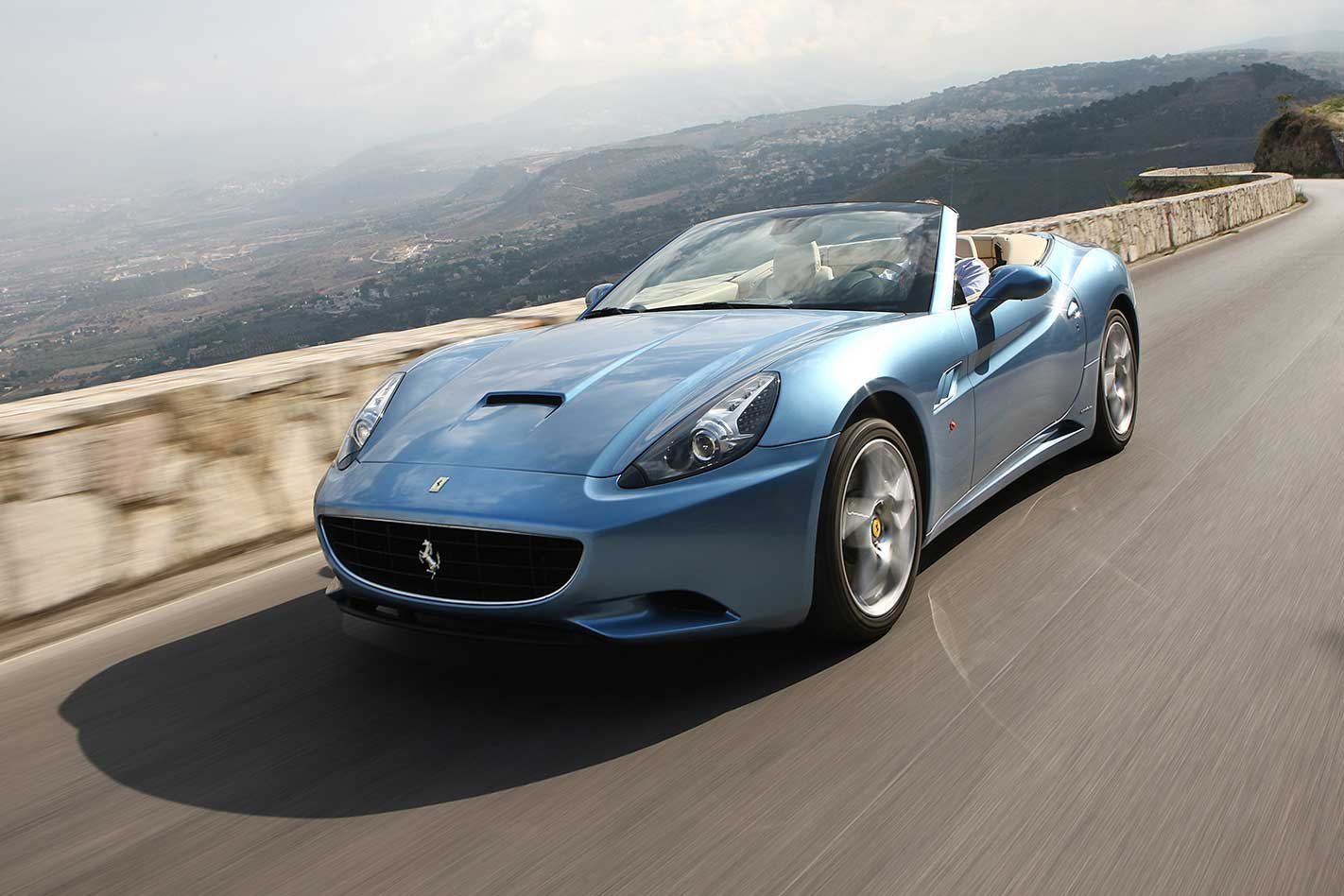California – where plastic surgeons are as famous as movie stars, where spoilt teens drive Porsches and, if you’re pet lion snuffs it, then you can get it stuffed at a 24-hour taxidermist.
This feature was originally published in MOTOR’s December 2008 issue
So when Ferrari revives the California name and produces a poseur-oriented drop-top for Malibu millionaires, you start to wonder: is it spoiling the brand with a compromised, please-all car, or has it made a genuine two-plus-two worthy of a prancing horse on its nose?

Today, just as back then, Pininfarina is in charge of the ultima alta moda design, even though the latest creation looks overstyled from certain angles, with too many lines, curves and controversial details like the low-mounted rear brake-light/indicator assembly.
The California is two cars in one; the fusion of coupe and spider, a so-called two-plus-two with rear buckets big enough for small children. Since the gestation of the California coincided with the termination of the retractable-hardtop project that was underway at Maserati, industry insiders speculated that Maranello picked up the pieces to use them for the rumoured entry-level Dino. “Not true!” protests Amedeo Felisa, Ferrari’s Vice General Manager. “What both models share is the V8 engine and the transaxle configuration, but the execution shows no parallels at all.”
And make no mistake, there’s plenty of sophisticated engineering hiding beneath the California’s crowd-pulling skin, like the optional Magnaride dampers and adaptive headlights fitted to our metallic blue test car.
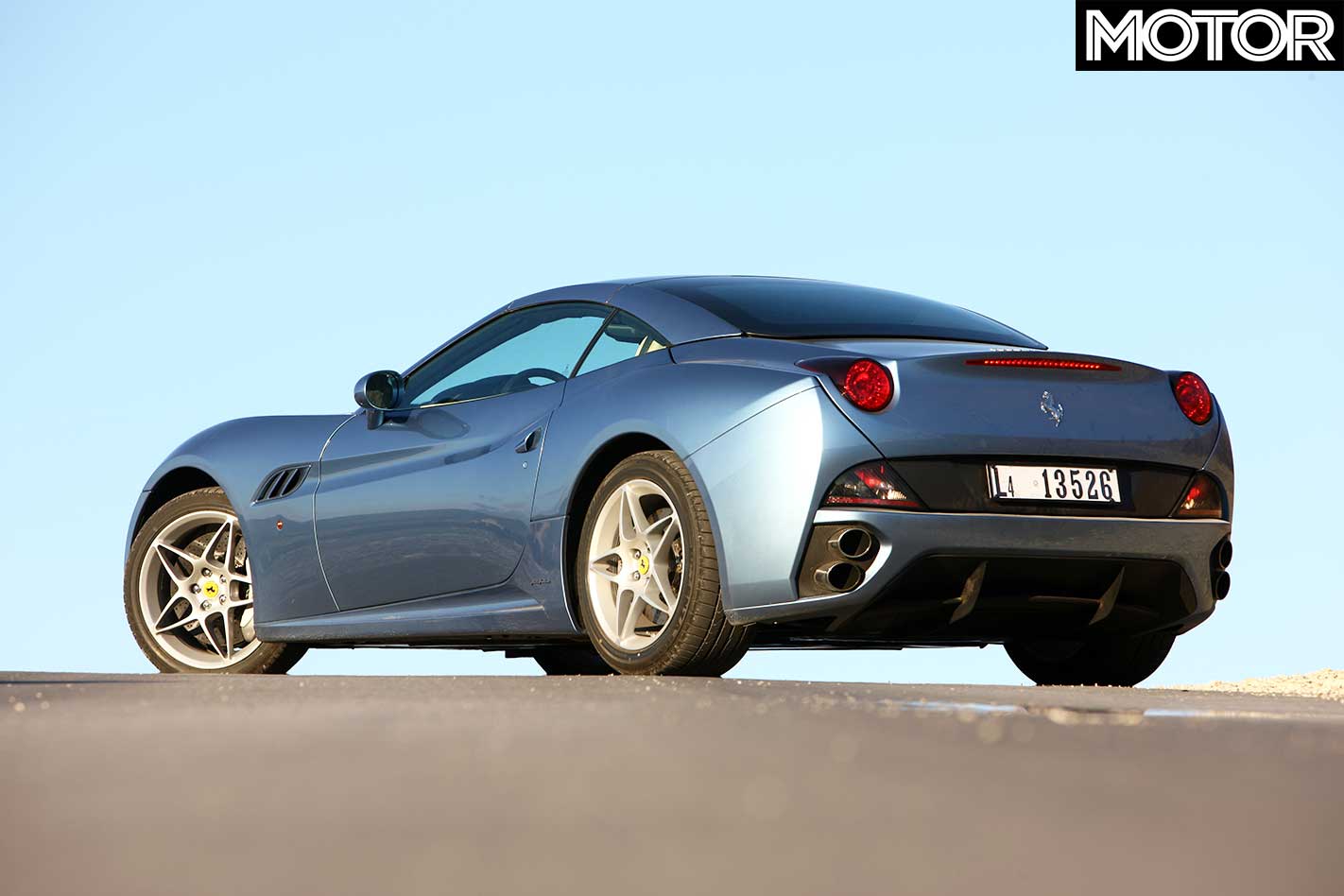
Inside the wide, long and beautifully appointed cabin, there’s plenty of room to accommodate long legs, broad shoulders and a tall scalp. The driver environment is actually nicer than in other Ferraris. There’s wall-to-wall leather with elaborate stitching, a powerful and easy-to-use ventilation system and, at long last, a decent sat-nav with a large touch-screen colour monitor, 30GB of MP3 memory and Bluetooth connectivity.
Folding and unfolding the roof takes 14 seconds. It’s a quick, almost noiseless affair with no grunts suggesting the highly-complicated mechanism may slip a disc. In coupé guise, wind noise isn’t an issue up to 200km/h, where engine and tyres play first and second fiddle anyway.
Thanks to the thin pillars, visibility is good bar some distortions in the rear window. The seats move in four different directions, and they even feature adjustable squabs and bolsters. The optional Daytona trim is for looks only, but the extra-cost carbonfibre buckets, which will be available late next year, are bound to provide even better lateral support.

Despite the quality, it’s noticeable that this is now the entry-level Ferrari: the steering wheel’s a step down from other models, with only three manettino positions instead of four (Comfort, Sport, CST off). You also miss out on the integrated LED rev counter from the Scuderia, and the bottom of the wheel is squared-off, which can be nuisance as the roadster takes over three turns from lock-to-lock. Below the air-con controls, there are three important buttons: launch, reverse and auto.
Starting the engine is a two-handed job. First, turn the ignition key, then push the red button which is integrated in the metal extension plate of the steering-wheel hub. Now prick your ears and relish the noise of the new 4.3-litre V8 with its high-pitched idle at 750rpm accompanied by various intake and exhaust tones busy sorting themselves out during warm-up.
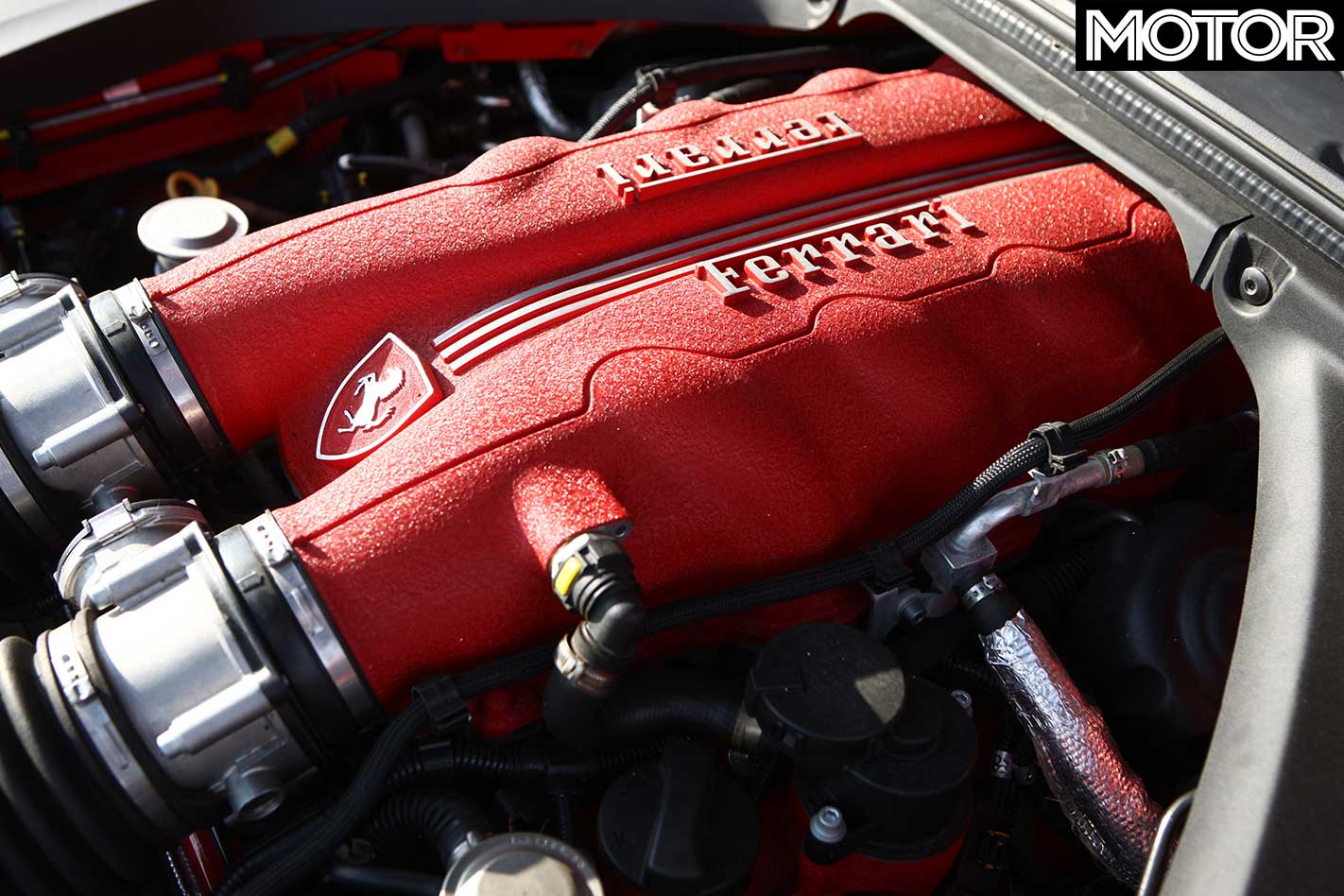
As we settle into the California, the digital display on the rev counter reads ‘N auto’. No, we don’t want that; we prefer to click through gears with our index fingers. Pressing the auto button once makes the auto symbol go away. What about the position of the manettino, though? ‘Comfort’ is for wimps, ‘CST OFF’ is for heroes, while ‘Sport’ is for us.
In this mode, the California strikes a balance between cottonwool soft and razorblade sharp, and it relays its mission to the engine, the transmission, the switchable dampers and the stability-control system. A little bit of rear-end leeriness is okay, but too much of it might be counter-productive early on in the day.
With all three mirrors at eye level, we set the indicator, snip in first and take off. There’s absolutely no need for a light right foot. For a start, the transaxle layout puts 53 percent of the 1735kg on the back wheels, which are shod with 285/40ZR19 Bridgestone Potenzas. And when warm, these gumballs stick to the ground like Velcro straps soaked in superglue.
Further traction assistance is provided by the F1-Trac traction control originally developed for the 599 and F430 Scuderia. Together with CST, it distributes the torque between the rear wheels, allowing the car to accelerate out of bends some 20-percent faster than a model fitted with a conventional limited-slip diff.

Attached to the all-aluminium spaceframe body are Ferrari’s familiar Quadralink front axle and a brand-new multi-link rear suspension. Its key innovation is a blend of more generous longitudinal compliance for improved ride and even less lateral play for enhanced handling precision. The optional Magnaride dampers are not individually adjustable. Instead, their calibration changes with the manettino position.
Project F149, as the California was tagged, also contains quite a few German genes. The direct-injection system was co-developed with Bosch, the dual-clutch transmission is the work of Getrag, and the two-piece folding hardtop was conceived by Webasto. The engine itself, however, and the noises it makes convey the much-loved Italiana.
Take in that 3D surround sound idle-speed rumble, relish the mighty part-throttle roar and then let the goose-pimple-provoking flat-out thunder massage your eardrums all the way to the 8000rpm redline. It’s aural heaven!
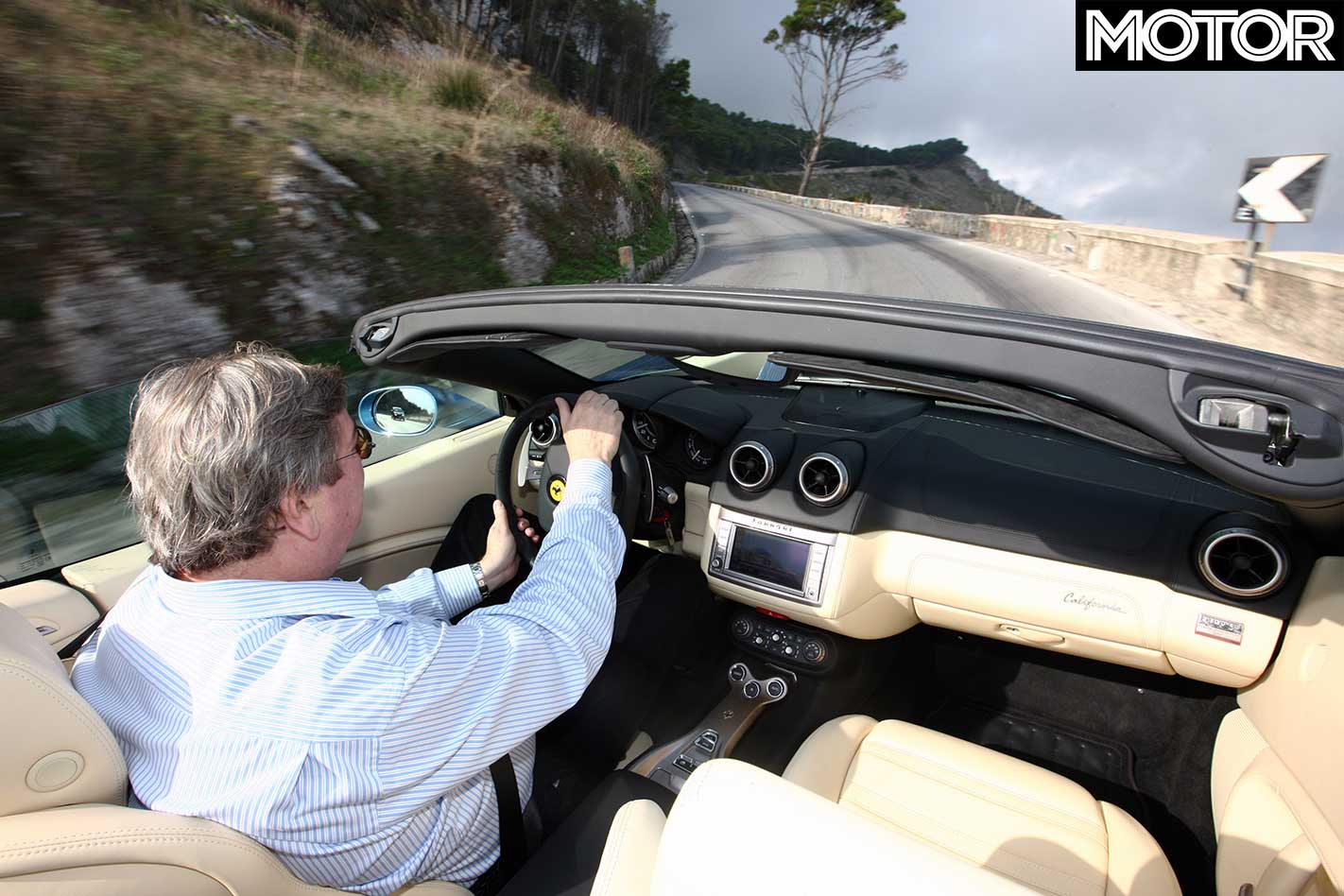
When you give this thing stick, paint chips will fall from the tunnel ceilings and the roadside Roman temples will tremble at their foundations. Fact is, the California has got enough grunt to chase a F430 away from the fast lane.
Its 4.3-litre V8 develops 338kW at 7750rpm and 485Nm at 5000rpm. Even in auto, the chameleon car from Maranello will accelerate in 3.9sec from 0-100km/h. In launch control mode, it will reportedly shave another tenth off that already impressive number. Top speed is 310km/h, and since this engine generates even more torque than the F430 Scuderia, tapping the mighty mid-range power feels like riding an afterburner.
Although Ferrari does offer optional 245/35ZR20 (front) and 285/35ZR20 (rear) footwear, the 19-inchers strike a compelling balance between traction, grip, roadholding and directional stability. We would also give the Magnaride option a miss. After all, the standard steel suspension is compliant, well-balanced and totally predictable in its multi-dimensional responses. The only drawback concerns the disagreement between the somewhat harsh high-speed compression and the laisser faire rebound. No big deal, but an irritation nonetheless.
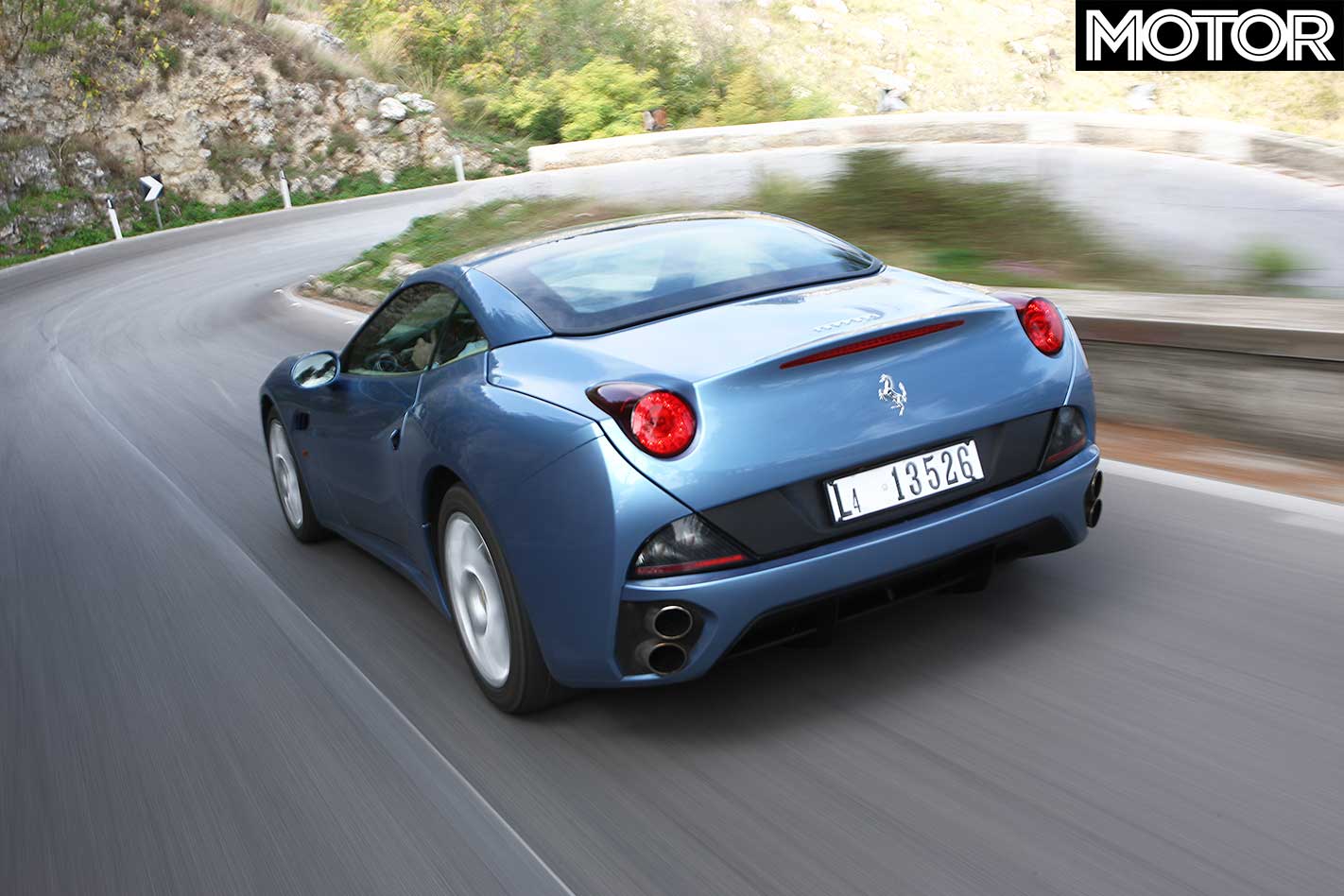
Although it is big and heavy, the seven-speed dual-clutch transmission is the best gearbox of its kind we have tried so far. No, this has almost nothing to do with the shift times, which subjectively don’t even feel quite as fast as the cannonball transitions experienced in the Scuderia. It’s the convincing all-round performance.
Take-off is spontaneous and totally devoid of hiccups or delays. Stop and go is commendably seamless and always fully connected. Upshifts are totally nod-free no matter whether you drop the hammer or feather the throttle. Even in auto mode, the Getrag unit comes close to a conventional automatic in the way it can read the driver’s right foot.
Since plausibility always pre-selects the next gear, very rarely does a split-second change of plan find you in the wrong ratio, but the subsequent quick fix never entails undue harshness. Revs permitting, the ’box will drop up to three ratios under kickdown. The only drawback we found was a short sixth gear which runs out of steam at 290km/h.
Since seventh is an overdrive, you lose 2200rpm on the upshift and from that point it takes almost forever to reach the claimed top speed. Purely a German problem, I know.
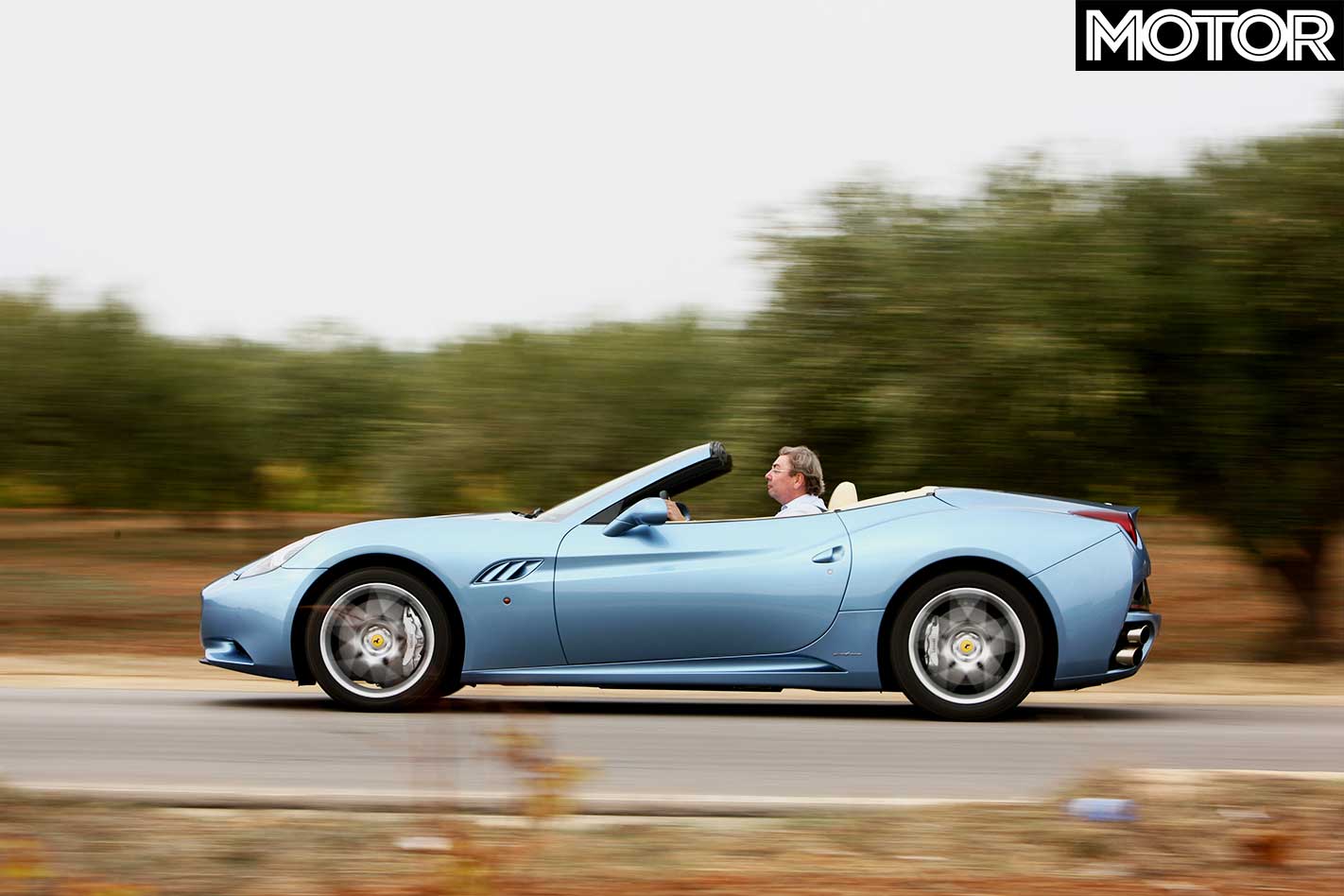
The steering is not Scuderia-fast, but its pace is spot-on for this kind of car. Better still, it is also weighted properly for optimum feel irrespective of lock and turn-in speed. On the uneven Sicilian autostrada where one would expect plenty of tugging at the helm when tackling the omni-present corrugated viaducts, the steering wheel of the California remained unflustered by the busy-but-competent front suspension. It displayed just enough self-centring force and exactly the right dose of counterbalance when you hold the car on opposite lock.
The standard carbon-ceramic brakes seem superb, but we have not really had the opportunity yet to try them hard for stamina and high-speed deceleration. The pedal feel is constant, communicative and correct in relation to the riveting stopping power it triggers, while the footwell architecture is neatly arranged with good spacing between the two pedals. As a nicely matched threesome, steering, brakes and throttle make it a delight to push all the way to the California’s dynamic boundaries.
Unlike the 599 GTB, which needs a lot of road and momentum to waltz, the California is a more eager and in some ways an even sportier piece of kit. As long as you are prepared to boot the loud pedal in a synchronised move, you can flick this car towards the apex amazingly early. But beware, because the arc it describes invariably uses part of the opposite lane, and any excessive throttle modulation will push you wide big time.
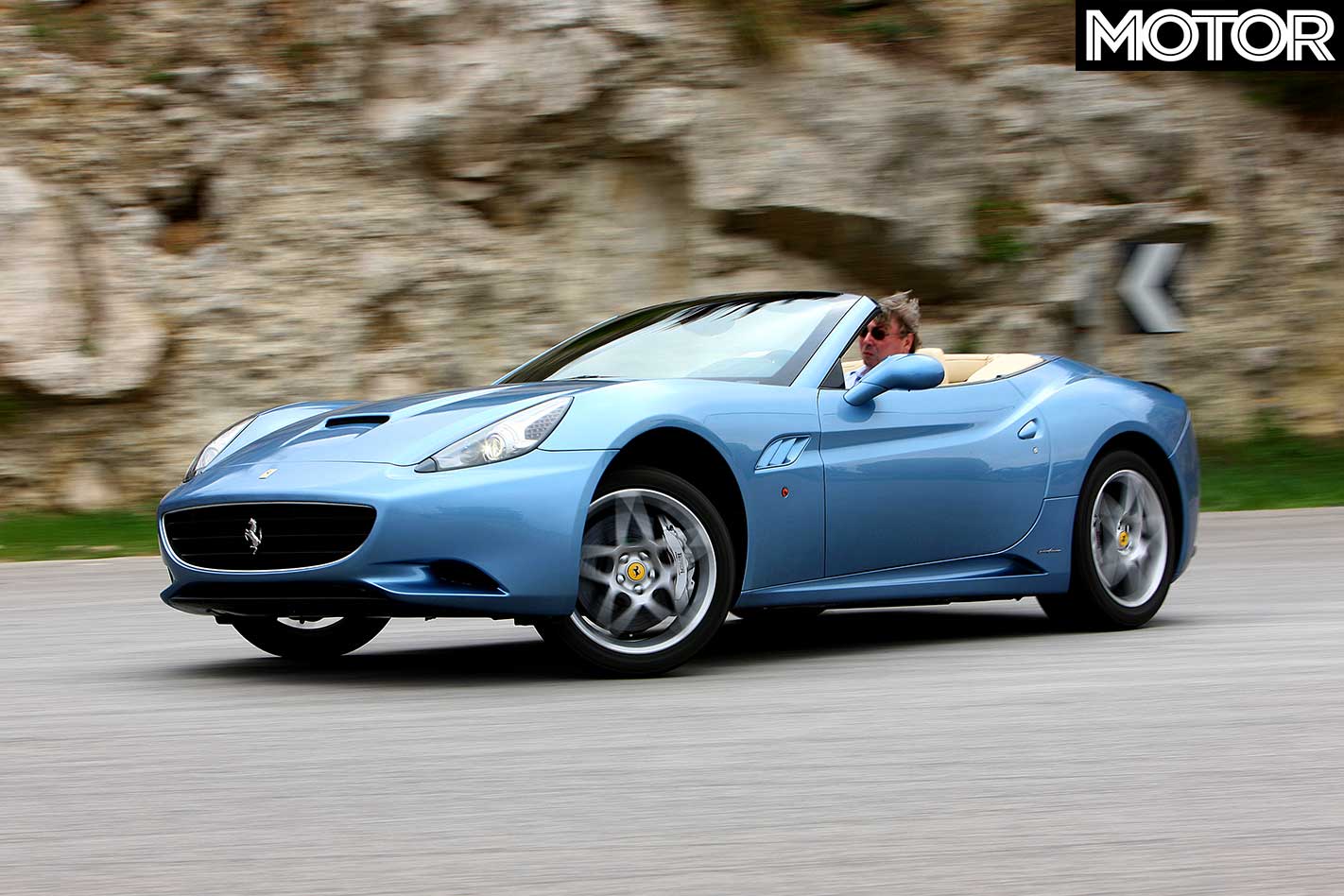
When exiting the bend, the F1-Trac invites you to feed loads of torque to the sticky-soft Potenzas, which subsequently take a little longer than usual to smear back inline with the front wheels. Ferrari’s marketing department believes that very few Californias will ever make it to a racetrack, and if this is the case, the owners will probably never unearth its true talents.
But despite its sporting abilities, the California isn’t your classic hardcore sports car. Ferrari expects it to be its volume seller, at 2500 units per year, and admittedly the California is already sold out for the next two years worth of production. But it’s no counterfeit, ambiguous ray-catcher designed for poseurs who can’t quite afford a more expensive Ferrari.
This car is a credible blend of GT and boulevardier, roomier and more practical than many spiced up two-seaters with their merciless crash-bang-wallop suspension. And with its stunning performance, leather-bound interior and V8 timbre, it is a genuine Ferrari.
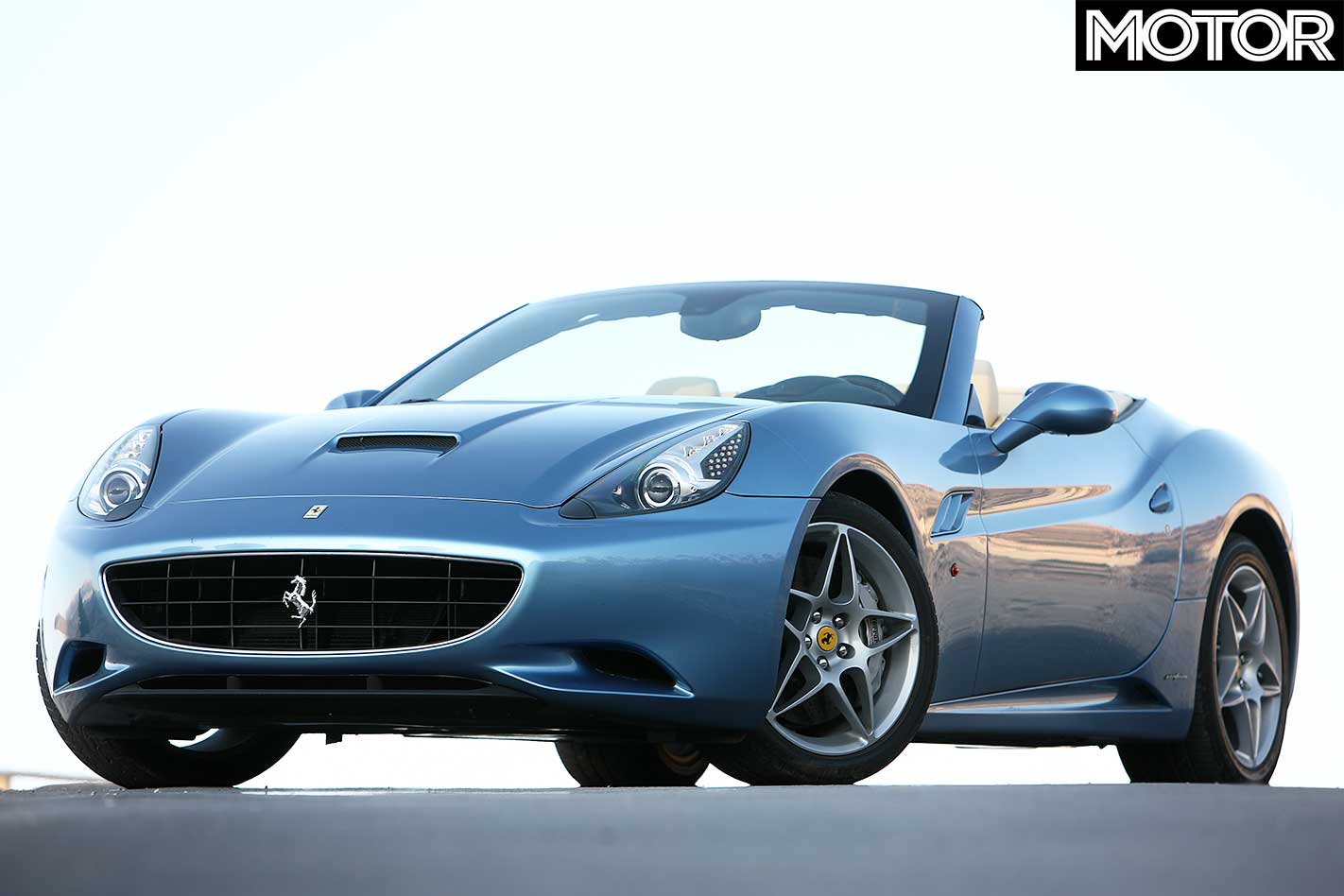
FAST FACTS 2009 Ferrari California
BODY: 2-door, 2+2 seat convertible DRIVE: rear-wheel ENGINE: 4297cc 90-degree V8, DOHC, 32v BORE/STROKE: 94.0mm x 77.4mm POWER: 338kW @ 7750rpm TORQUE: 485Nm @ 5000rpm WEIGHT: 1735kg POWER-TO-WEIGHT: 195kW/tonne TRANSMISSION: 7-speed double-clutch 0-100km/h: 3.9sec (claimed) 0-400m: 12.2sec (claimed) 0-1000m: 22.1sec (claimed) TOP SPEED: 310km/h (claimed) SUSPENSION (f): double A-arms, coil springs, magnetic dampers, anti-roll bar SUSPENSION (r): multi-links, coil springs, magnetic dampers, anti-roll bar L/W/h: 4563/1902/1308mm WHEELBASE: 2670mm TRACK: 1630mm (f), 1605mm (r) BRAKES (f): 390mm carbon-ceramic ventilated/drilled discs, six-piston calipers BRAKES (r): 360mm carbon-ceramic ventilated/drilled discs, four-piston calipers WHEELS: 19-inch, alloy TYRES: Bridgestone Potenza RE050A; 245/40ZR19 (f), 285/40ZR19 (r) PRICE: $420,000 (estimated)
LIKES: Superb steering, power, traction, engine and gearbox DISLIKES: Odd styling, slightly harsh ride, inevitable poseur image
RATING: 8.5 out of 10 stars
Back seat Ferrari

The California is the Ferrari’s first two-plus-two convertible since the ungainly Mondial, launched in 1980. It was updated with a QV version (for quattrovalve, improving on the original’s two-valves-per-cylinder) in 1983 and remained in production for another decade.
While the California’s rear seats are, to be accurate, optional, the 308-based Mondial made way for rear passengers with a 100mm extension to the wheelbase. It was originally powered by a 153kW 2929cc V8 (although by the end, a 224kW 3405cc was standard). It wasn’t quick, with 0-100km/h times in the mid-sixes for early cars, but the final 3.4-litre could clock mid-fives.

